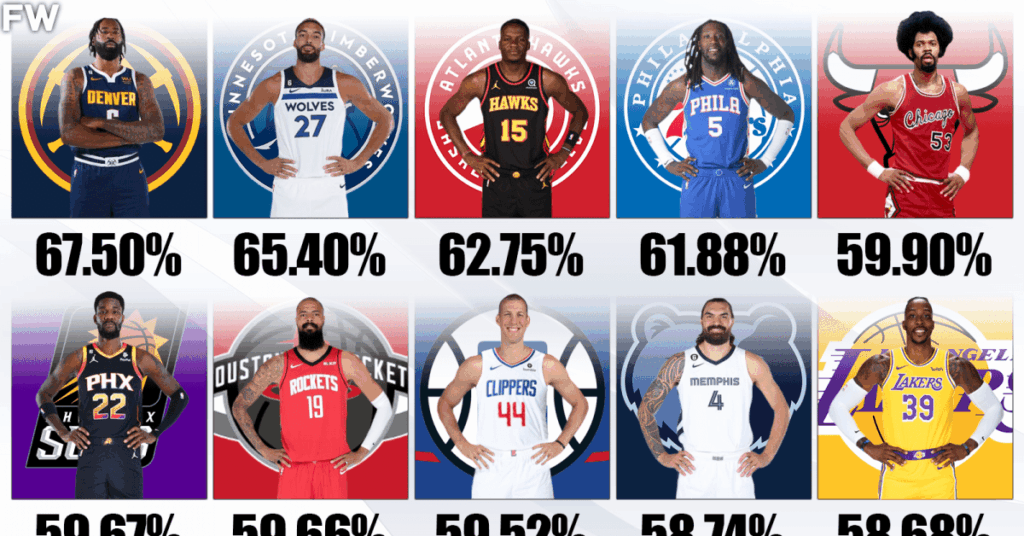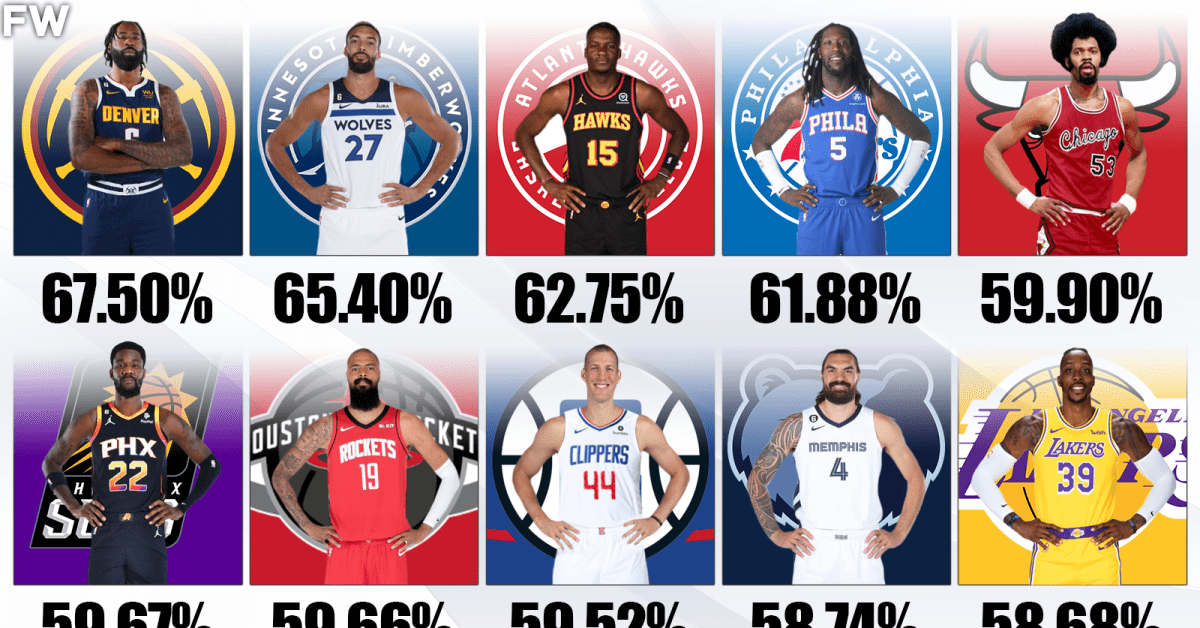
What Percent of the NBA is White? Analyzing Player Demographics
The National Basketball Association (NBA) is a global phenomenon, celebrated for its athleticism, skill, and diverse roster of players. Discussions about player demographics are common, and one frequent question is: what percent of the NBA is white? Understanding the racial and ethnic composition of the NBA provides insights into the league’s evolution, cultural impact, and representation. This article delves into the current and historical percentages of white players in the NBA, exploring the factors contributing to these trends and their implications.
Current NBA Demographics
As of the current NBA season, the racial demographics of players are as follows (approximately):
- Black or African American: Approximately 70-75%
- White: Approximately 15-20%
- Latino/Hispanic: Approximately 5-10%
- Other (Asian, mixed race, etc.): Approximately 5%
Therefore, to answer the question directly, what percent of the NBA is white currently sits around 15-20%. These numbers can fluctuate slightly from season to season due to various factors, including international player recruitment and the overall talent pool available.
Historical Trends of White Players in the NBA
The percentage of white players in the NBA has varied significantly throughout its history. In the early years of the league (1950s and 1960s), white players constituted a much larger proportion of the NBA. The league was dominated by white American players. During this era, legendary figures like Bob Cousy, Bob Pettit, and Jerry West were among the most prominent stars.
As the NBA integrated and evolved, the number of Black players steadily increased. The shift was influenced by the breaking down of racial barriers and the increasing recognition of Black athletes’ exceptional talent. By the 1970s and 1980s, the league saw a significant rise in the number of Black superstars, such as Julius Erving, Magic Johnson, and Larry Bird.
The 1980s are often remembered for the rivalry between Magic Johnson and Larry Bird, which many credit with revitalizing the NBA’s popularity. While Magic Johnson was Black and Larry Bird was white, their competition transcended race, focusing on their incredible skill and competitive spirit.
In the 1990s and 2000s, the league became even more globalized, with an influx of international players. This further diversified the NBA’s racial and ethnic composition. While the percentage of Black players remained high, the proportion of white American players gradually decreased, while the number of white European players like Dirk Nowitzki, Tony Parker, and Pau Gasol rose significantly. This globalization has impacted what percent of the NBA is white as well.
Factors Influencing Player Demographics
Several factors contribute to the current demographic landscape of the NBA:
Globalization of Basketball
The NBA’s global scouting and recruitment efforts have expanded, bringing in talent from all corners of the world. European countries, in particular, have consistently produced skilled white players who have made a significant impact on the league. The increased presence of international players affects what percent of the NBA is white, as many of these international players are of European descent.
Youth Basketball and Development Programs
Youth basketball programs and development leagues play a crucial role in shaping future NBA players. These programs often cater to diverse communities, but the accessibility and resources available can vary. Factors like socioeconomic status and geographic location can influence who participates in these programs, ultimately affecting the talent pipeline to the NBA. [See also: NBA Youth Basketball Initiatives]
Cultural and Societal Influences
Cultural and societal factors also play a role. Basketball’s popularity and cultural significance differ across communities and countries. In some regions, basketball is deeply ingrained in the culture, leading to a higher participation rate and a larger pool of potential NBA players. This impacts the overall demographics and what percent of the NBA is white.
Recruitment and Scouting
NBA teams invest heavily in scouting and recruitment, both domestically and internationally. These efforts are aimed at identifying the best talent regardless of race or ethnicity. However, biases, whether conscious or unconscious, can influence scouting decisions. Ensuring fair and equitable scouting practices is essential to maintaining diversity in the NBA.
Notable White Players in NBA History
Despite the relatively lower percentage of white players in the NBA compared to other demographics, numerous white players have left an indelible mark on the league. Some of the most notable include:
- Larry Bird: A three-time NBA champion, three-time MVP, and twelve-time All-Star, Bird is considered one of the greatest players of all time.
- Dirk Nowitzki: A fourteen-time All-Star and NBA champion, Nowitzki is renowned for his exceptional shooting ability and leadership.
- Steve Nash: A two-time MVP and eight-time All-Star, Nash is celebrated for his playmaking skills and innovative style of play.
- Kevin Love: A five-time All-Star and NBA champion, Love is known for his rebounding and scoring prowess.
- Pau Gasol: A six-time All-Star and two-time NBA champion, Gasol is recognized for his versatility and basketball IQ.
These players, among many others, have contributed significantly to the NBA’s rich history and have inspired fans around the world. Their success demonstrates that talent and skill transcend race and ethnicity. Understanding what percent of the NBA is white should not overshadow the individual achievements of these players.
The Impact of Diversity in the NBA
The NBA’s diversity is one of its greatest strengths. A diverse league brings together players from different backgrounds, cultures, and experiences, enriching the game and fostering a more inclusive environment. The varied perspectives and playing styles contribute to the league’s dynamism and appeal. [See also: NBA Diversity and Inclusion Initiatives]
Moreover, the NBA’s diversity reflects the diversity of its global fan base. Fans from all over the world can find players they identify with, fostering a sense of connection and belonging. This inclusivity is essential for the NBA’s continued growth and success.
Looking Ahead: The Future of NBA Demographics
Predicting the future demographics of the NBA is challenging, but several trends are likely to continue:
- Continued Globalization: The NBA will likely continue to scout and recruit talent from around the world, further diversifying its player pool.
- Emphasis on Skill Development: The focus on skill development will likely remain a priority, regardless of race or ethnicity.
- Increased Representation: Efforts to increase representation from underrepresented groups will likely continue, promoting a more equitable and inclusive league.
It is important to note that while discussions about demographics are valuable, the focus should always remain on individual talent and merit. The goal should be to create a league where every player has the opportunity to succeed, regardless of their background. The question of what percent of the NBA is white is interesting, but it is more important to focus on the overall quality and diversity of the league.
Conclusion
So, what percent of the NBA is white? Currently, it’s approximately 15-20%. This percentage has fluctuated throughout the league’s history, influenced by factors such as globalization, youth basketball programs, and cultural trends. While demographic data provides valuable insights, it is crucial to remember that the NBA’s strength lies in its diversity and the individual talent of its players. The league’s commitment to inclusivity and equitable opportunities will continue to shape its future, ensuring that the best players, regardless of their background, have the chance to shine.
